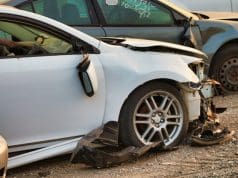
Advances in Accident Investigation
Technology is revolutionizing how truck accidents are investigated, delivering unprecedented accuracy and efficiency to the legal process. Thanks to tools like drones and 3D laser scanners, accident sites that once required hours of manual measurement and sketching can now be mapped in minutes, capturing every detail in high resolution. This kind of precise data can make a critical difference for anyone who needs to reconstruct how a crash happened. Working with a technology-savvy truck accident attorney means clients benefit from the ability to review virtual models, analyze spatial relationships, and present compelling visual evidence in court.
Drones can document hard-to-reach areas and wide accident scenes that would be challenging to cover on foot. These digital snapshots allow legal teams to build animated reconstructions, replaying critical moments from multiple angles for insurance adjusters, judges, or juries. According to the National Highway Traffic Safety Administration, technological advancements in accident reconstruction contribute significantly to the speed and reliability of investigations. Immediate, accurate data capture is crucial not just for liability, but also for traffic flow and public safety following major truck accidents.
Digital Evidence Collection: From Dashcams To EDRs
The modern commercial truck is a rolling data center loaded with digital devices designed to record every second on the road. Dashcams mounted in and around truck cabins provide continuous video coverage of events leading up to and during a crash. These visual records offer an objective viewpoint, reducing disputes over what happened. At the same time, Electronic Data Recorders (EDRs), sometimes called “black boxes,” capture technical information like speed, throttle status, airbag deployment, and braking activity. Because this data is generated automatically and can’t be altered easily, it helps establish unbiased narratives in situations that might otherwise rely on conflicting eyewitness reports.
Time is of the essence when securing this evidence. Skilled legal teams know how to request data downloads before they are overwritten or lost, ensuring that crucial video and technical records are preserved. The combined use of dashcam footage and EDR data can pinpoint speed, direction, driver reaction times, and even road or weather hazards, which helps attorneys paint a thorough, fact-based picture of the crash circumstances. In practice, these digital records prevent misinterpretation and can be pivotal during negotiations or trials, often discouraging false claims and hasty settlements.
The Role of Telemedicine in Injury Assessment
Rapid access to quality medical care can be challenging in the aftermath of a truck collision, especially if the crash occurs in a rural area or during off-hours. Telemedicine is changing that by connecting injury victims with healthcare professionals in real time, regardless of location. Through secure video conferencing, accident survivors can be evaluated for everything from visible bruises to more serious internal injuries. Doctors can document symptoms, prescribe treatments, and generate medical reports that are vital evidence should a claim or lawsuit follow.
Data from HealthIT.gov highlight that the adoption of telemedicine has expanded dramatically, especially since the COVID-19 pandemic. This shift has not only made prompt care more accessible but also created digital trails of injury documentation that are easy for legal and medical professionals to share, review, and verify. For a Truck Accident Attorney, electronic health records provided over telehealth platforms are time-stamped and securely archived, offering critical, reliable evidence. They can be integrated directly into case files, giving attorneys an evidence-based foundation for arguing the full extent of their client’s losses or needs.
Data-Driven Case Analysis
Legal professionals are increasingly harnessing the power of big data and analytics to analyze truck accident cases. By tapping into local, state, and federal accident databases, attorneys can compare case details to thousands of similar incidents, searching for patterns in crash causes, vehicle type, weather conditions, driver fatigue, or even road design flaws. These insights transform a single crash from an isolated event into part of a larger, data-informed narrative.
This approach empowers legal teams to make persuasive arguments based on trends and statistics rather than individual perspectives. For example, if a particular make or model of truck is statistically linked to more braking failures, or a stretch of road is identified as unusually dangerous for commercial vehicles, attorneys can leverage these insights to support their client’s position. Big data isn’t just a buzzword—it’s rapidly becoming a source for pinpointing negligence, assigning liability, and negotiating more favorable settlements with insurers.
Virtual Courtrooms and Remote Legal Proceedings
The pivot to remote and virtual courtrooms has dramatically increased access to justice for accident victims. Today, hearings, depositions, and even trials can be held online, connecting participants through video conferencing tools regardless of their physical location. This is a significant advantage for those recovering from injuries, allowing them to participate in legal proceedings without the added stress and cost of travel.
While the move to virtual courtrooms does require some adjustment—lawyers must hone their on-camera presence and learn to present evidence digitally—it offers greater flexibility and efficiency. Cases that might have been delayed for months due to scheduling issues or travel restrictions can proceed swiftly. This means fewer delays and, often, faster financial relief for clients. The legal industry’s adaptation to virtual proceedings is redefining expectations, and these technologies are poised to become a staple even beyond pandemic-era necessity.
Protecting Client Privacy in a Digital World
As legal practices become more digital, safeguarding sensitive data has never been more critical. Client communications, medical records, accident scene data, and settlement negotiations are increasingly stored and shared online. Every Truck Accident Attorney is responsible for using robust encryption, secure client portals, and password-protected documents to ensure that confidential details never fall into the wrong hands.
Cyberthreats are a genuine and growing concern in today’s digital landscape. Still, technology-oriented law practices recognize that maintaining trust requires more than just legal savvy — it demands top-tier cybersecurity. This commitment to data privacy reassures clients that their case will be handled with integrity from start to finish and that their most sensitive information is shielded from unnecessary exposure. Such protection is a non-negotiable expectation for anyone involved in a truck accident case.
Real-Life Applications: When Tech Makes All the Difference
The practical impact of technology in truck accident litigation is evident in cases where new tools have shifted the result from uncertain to clear-cut. In one real situation, dashcam footage captured a passenger vehicle swerving unexpectedly in front of a truck, clarifying doubts about fault. In another, detailed drone scans of an accident site exposed that a low-hanging road sign was obscured, influencing the determination of liability and subsequent changes in city infrastructure. Such examples demonstrate how harnessing the right digital resources can prevent errors, refute false claims, and introduce a layer of transparency that’s impossible to ignore.
- Dashcam recordings provide unbiased accounts, bridging gaps in memory or contradictions among witness accounts.
- Telehealth offers ongoing documentation for injury progression, supporting immediate and long-term claims for recovery costs.
- Instant digital sharing allows legal teams to collaborate seamlessly and respond swiftly, even across multiple locations.
These real-life outcomes highlight how the intersection of law and technology helps restore confidence and clarity for accident victims experiencing stress, confusion, or uncertainty.
Future Trends And What They Mean For Victims
The next wave of innovation will bring even greater changes to truck accident law. Artificial intelligence tools may soon help analyze crash data and case histories within seconds, suggesting best strategies and flagging anomalies for further review. Blockchain-secured records promise tamper-proof chains of custody for digital evidence, eliminating disputes over authenticity. Meanwhile, smarter trucks equipped with more advanced sensors and real-time connectivity will generate richer data streams, benefitting everyone from investigators to accident victims.
As technology continues to reshape how accidents are handled, those hurt in truck crashes can expect faster claims, more reliable fact-finding, and a higher degree of transparency. A skilled Truck Accident Attorney who stays current with these trends will be better positioned to advocate for their clients, ensuring that justice keeps pace with the digital age and that accident victims receive the support and recovery they deserve.



